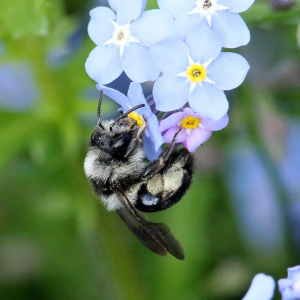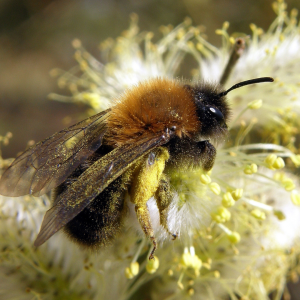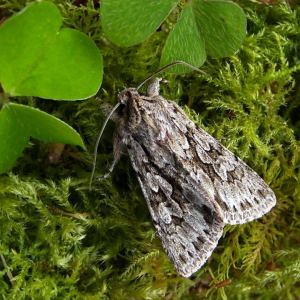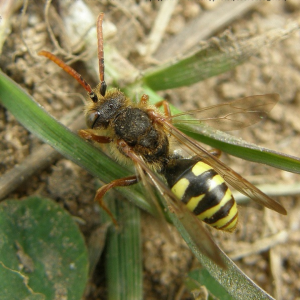Pollinators in March
Which pollinators are active this month? What plants are they visiting? And what can you do to help them? Here’s everything you need to know about pollinators in March.
Which pollinators can I spot in March?
On the island of Ireland, 20% of our wild bees are bumblebees, and 80% are solitary bees. We also have 180 hoverflies. In March, native plants start to bloom in succession, supporting our native pollinators as they emerge from hibernation one by one to forage on on nectar and pollen-rich flowers.
If you spot any of these species, submit your sightings to the National Biodiversity Data Centre. You can attach a photo if you’re not sure if your identification is correct.
Which native plants are growing in March?
Native plants provide the best source of food for our pollinators as they have evolved together. Keep an eye out for some of these species in March.
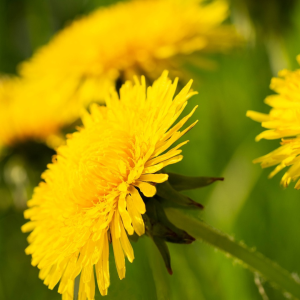 |
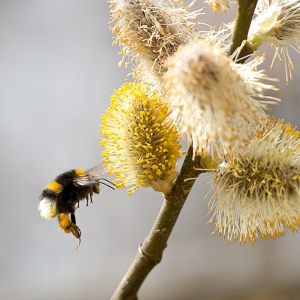 |
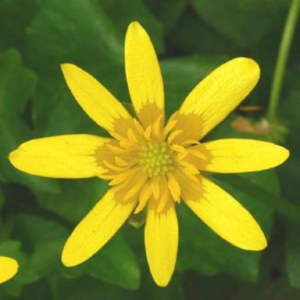 |
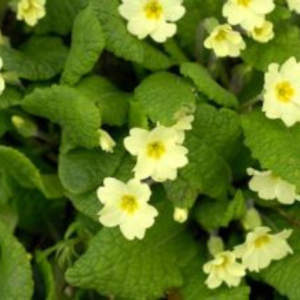 |
|
Dandelion (Taraxacum agg.) |
Willow (Thomas Cuffe) (Salix species) |
Lesser Celandine (Zoë Devlin) (Ficaria verna) |
Primrose (Zoë Devlin) (Primula vulgaris) |
Submit your sightings to the National Biodiversity Data Centre. You can attach a photo if you’re not sure if you have the correct identification.
A warning about wildflower seed mixes: Wildflower seed mixes can do more harm than good to biodiversity. They often result in colourful displays that are attractive to humans but are of little value to pollinators. Many contain non-native species and can inadvertently introduce invasive species. Please avoid using them where possible. The best way to encourage native wildflowers is by reducing mowing.
How can I help pollinators in March?
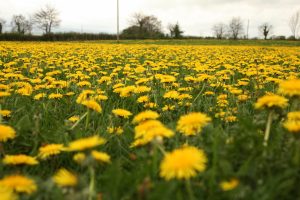 This month, keep an eye out for pollinators as they emerge from hibernation. Send your sightings to the National Biodiversity Data Centre and help us learn more about these important insects. One of the best actions you can take to help pollinators is reduce mowing. This helps local, native wildflowers emerge naturally over time. In March, Dandelions begin blooming. Our data shows they are the most important source of nectar and pollen for pollinators on the island of Ireland, so ‘Let Dandelions Bee’!
This month, keep an eye out for pollinators as they emerge from hibernation. Send your sightings to the National Biodiversity Data Centre and help us learn more about these important insects. One of the best actions you can take to help pollinators is reduce mowing. This helps local, native wildflowers emerge naturally over time. In March, Dandelions begin blooming. Our data shows they are the most important source of nectar and pollen for pollinators on the island of Ireland, so ‘Let Dandelions Bee’!
1. Spot pollinators when they emerge
As the days get lighter and warmer, pollinators will continue to emerge from hibernation and will start to look for somewhere to make a nest and lay their eggs. Bumblebees tend to forage within 1km of their nest, and solitary bees only within a few hundred metres. If you see them foraging on flowers, it might mean their nest is close by. Send in your sightings and help us learn more about these important insects.
- Learn about pollinators on the island of Ireland
- Submit sightings of pollinators to the National Biodiversity Data Centre
2. Create nesting sites for solitary bees
Solitary bees are the largest group of bees on the island of Ireland. They do not form colonies like bumblebees and honeybees. Instead, they nest alone. Male and female adults normally emerge from hibernation in spring. The female finds a mate and makes a nest, within which she constructs a small number of little cells. In each cell she lays an egg and leaves a ball of food made of a mixture of pollen and nectar.
Solitary bees are vitally important to pollination. Bumblebees and honey bees have evolved to carry a compact pollen pellet on their back legs, allowing them to efficiently carry as much pollen as possible. But solitary bees haven’t evolved this ability. Instead, they scatter pollen widely between flowers – unfortunate for the bee, but great for pollination!
Most solitary bees in Ireland are ‘mining’ bees – they create nests by burrowing into areas of bare earth. The rest are ‘cavity-nesting bees’ – they make nests in hollow dead wood, hollow stems or crevices in loose masonry. Solitary bees only forage within a few hundred metres of their nest – you can help them by creating areas of nesting habitat close to a good source of nectar and pollen.
3. Learn about nocturnal pollinators
Many of our pollinators are busy at work during the night whilst we are sleeping. Like day-flying pollinators, those that fly at night or at twilight need to be protected across our entire landscape from farms to local communities to gardens. Our most important nocturnal pollinators are moths. Learn more about nocturnal pollinators and how to help them, in our how-to guide ‘Protecting nocturnal pollinators’.
4. Plan a pollinator-friendly mowing schedule
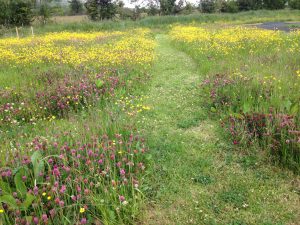 Mowing less is one of the best actions you can take to help pollinators and biodiversity. By reducing mowing even to once a month, you can help restore pockets of species-rich grassland: a vital habitat providing food and shelter for pollinators. Species-rich grasslands have been decimated in Ireland in recent decades. There are a couple of options to choose from to suit your space.
Mowing less is one of the best actions you can take to help pollinators and biodiversity. By reducing mowing even to once a month, you can help restore pockets of species-rich grassland: a vital habitat providing food and shelter for pollinators. Species-rich grasslands have been decimated in Ireland in recent decades. There are a couple of options to choose from to suit your space.
Short-flowering meadow: Let Dandelions bloom until mid April, and then cut every 4-6 weeks.
Long-flowering meadow: Cut once a year in September.
Use a combination of methods depending on your space. In all cases, it is essential to remove grass cuttings, otherwise they will return to the soil, increase soil fertility, and wildflowers won’t grow. Get creative – mow pathways so you and others can enjoy the meadow. Leave some areas to grow totally wild.
- Create a short-flowering meadow
- How-to guide: creating and restoring meadows in local communities and gardens
Find out more
- Top Ten Ways to Help Pollinators
- Who are Our Pollinators?
- Online course: How to Identify and Record Common Irish Bumblebees
- Resources page

